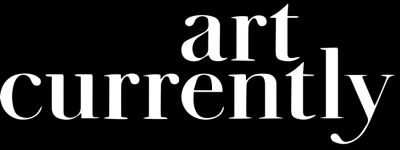Marka27 on Pioneering Neo Indigenous Art Through Portrait Wall Murals
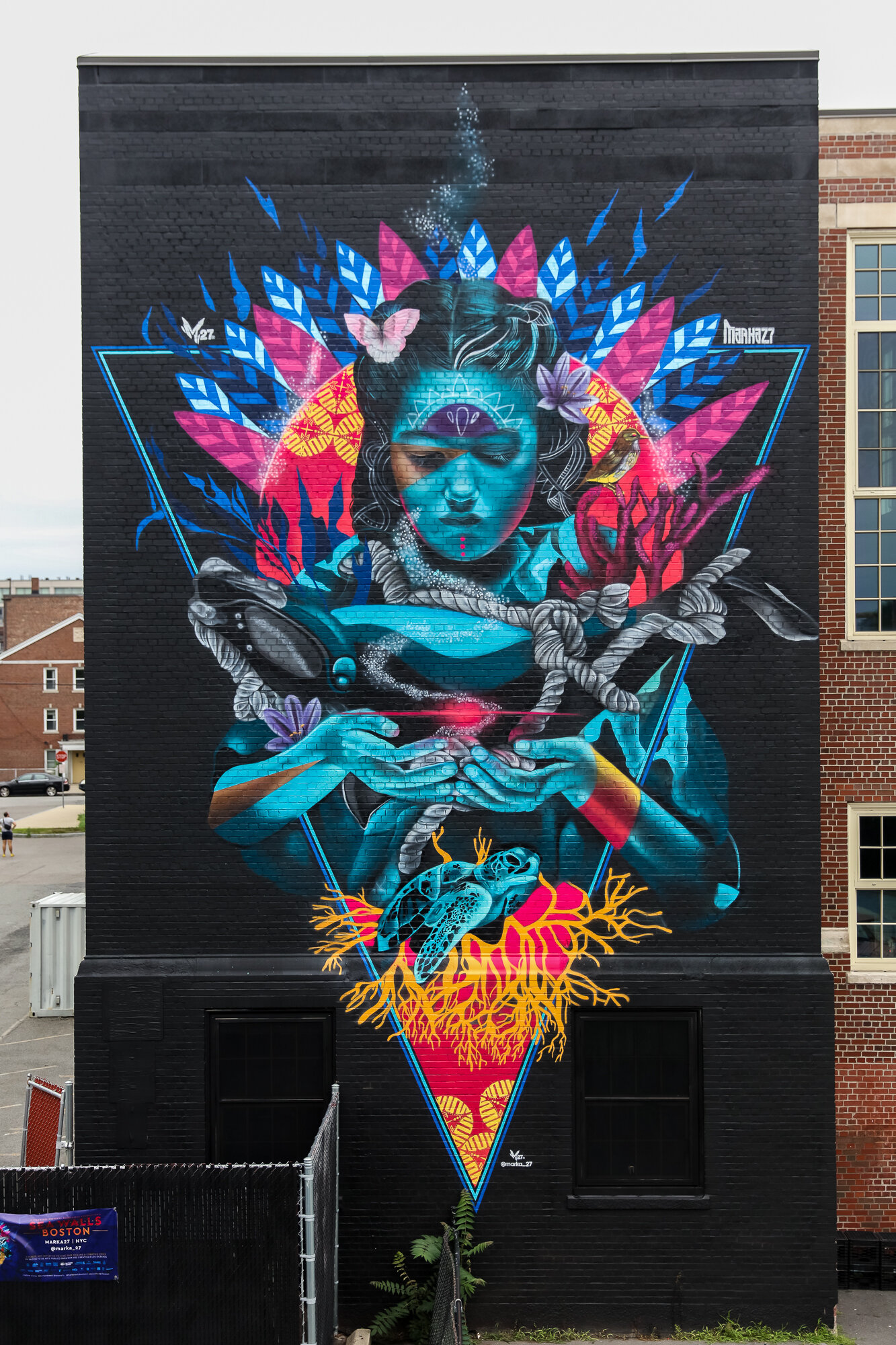
The art world has slowly begun to acknowledge the vital roles that BIPOC artists play in society, while more equitable spaces become available to generate new conversations. Artists like Victor “Marka27'' Quiñonez, a BIPOC activist whose purpose is to voice his community, have made breakthrough contributions to urban spaces worldwide. Pioneering his art movement style known as Neo Indigenous, Victor is part of an assembled community of individuals responsible for social discourses on racial injustices and indigenous culture within the street art sphere.
With a career spanning over the past twenty years, internationally recognized Marka27 has worked on mural projects with a more profound social and environmental impact - aiming to speak, represent and connect with local communities. In the artist's latest collaboration, Sea Walls Boston 2021, the public art initiative brought together artists Taj Francis, Sophy Tuttle, and It's A Living, amongst others, to create murals tackling ocean issues. Marka27's mural, "Espíritu del Mar" (Spirit of the Sea), focused on biodiversity loss and can be seen at the Donald McKay School.
Above all, though, he is first a husband and a father. With his wife and business partner Liza Quiñonez, the two contribute to the world of mural production through their creative agency Street Theory Gallery, which aims to promote creative expression and equity, mainly within the BIPOC community. For both, being a voice for their community is crucial to creating equity and diversity in the arts, especially within an urban practice original to Black and Latino artists [consider Mexican Muralism as well] before becoming popular to the art masses. Victor proves that working with a purpose in recognizing your culture and identity is owning conversations that are true to your community.
From being born in Mexico and raised in the US, these cultural connections shaped his style approach to the arts. Although not associated with members from his early exposure to the gang graffiti in Texas, young Victor found excitement in making graffiti art in public spaces, with locals as the immediate audience, which later fueled his focus to now: Neo Indigenous art. Throughout his career, Marka27 has found a language that speaks to a broader audience. Some of his most iconic mural works include the representation of women, as shown in his comprehensive portraits combined with elements of post-colonial culture and the contemporary, like "Warrior Queens," "Neo Sole," "Mexica Queen x Warriors," and "Divine Sisterhood."
I had the honor of visiting the artist and Liza for this interview at their studio in Brooklyn. I felt humbled by their welcoming. The studio space is vibrant, filled with the artist's design toys and smaller-scale paintings, allowing me to appreciate the detail of his craftsmanship and designs fully. There are many personal reasons I admire Marka27's work. As a Mexican woman, seeing myself, the woman of my family and friends represented in his paintings is a visual panegyric of what women and humanity are, beautiful in all their essence.
Where does your artistic name "Marka27" originate?
So, 'marca' in Spanish means to write or to leave a mark. It also translates to what you call a brand. As a graffiti artist, the letter 'C' is not visually attractive, 'K' has way more style. I wanted everyone to know that this is a Latino artist, so having a Spanish name gave it away. The 27 was always part of it because I was born on the 27th, and growing up around graffiti, you realize that many graffiti artists that have a number after their name use it as a way of recognition. There is no other Tracy 168 (@the_tracy168) and King157, so Marka27 was a way of identifying myself even more so.
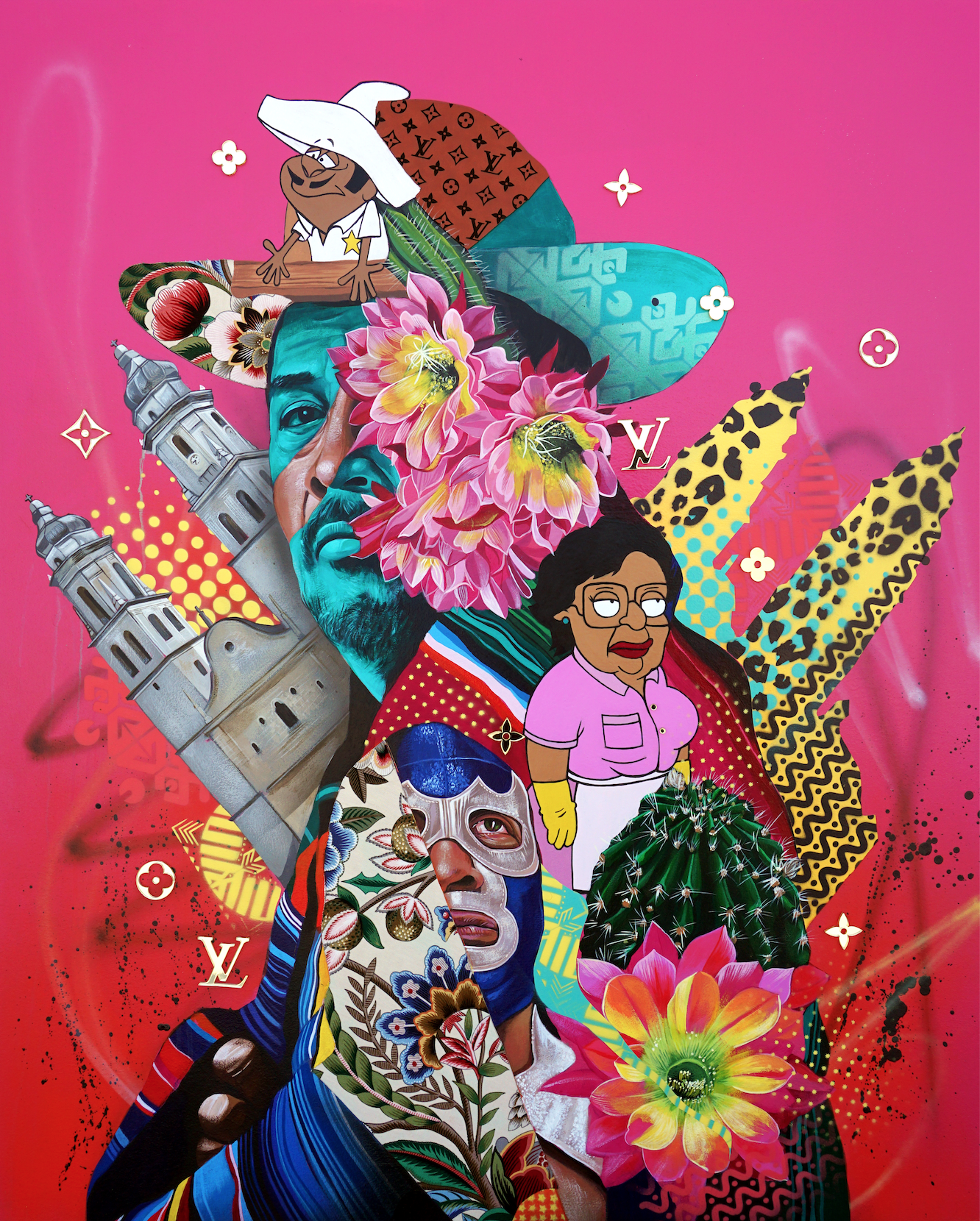
It's so interesting to hear your start in graffiti art; you're right; graffiti has traditionally been considered "illegal," and not until recently did it become commercialized.
Unfortunately, I think a lot of it has to do with the racial inequities involved with graffiti and urban culture, so it's not a surprise that the popularity of street art was by European or American white artists. In reality, graffiti was introduced by Latinos and Blacks who are not the face of this movement. I believe this is beginning to change; people are trying to make a difference. Of course, we as our people need to support ourselves by being inclusive and impacting our communities. It's essential to control our narratives, and that has a lot of weight on your shoulders as Black or Latino artists because we have so much culture and heritage in what we do.
After being introduced to the work of the Mexican Muralists in high school, I was fascinated with their purpose of representing social issues to educate the masses. Years later, these influences paved my transition from graffiti art to mural art, intending to reach a broader audience. Back then, it wasn't considered street art; instead, referred to as a mural or production, so it was a combination of graffiti letters but with a theme and a background, but it was much more elaborate and had a message behind it. Many artists were doing it at the time, like Tats Cru (@tatscru) from The Bronx, Hex, and Slick from Los Angeles; they were all doing fantastic art way before street art. Many of these artists are Asian, Chicanos, and African Americans, proud of their heritage and telling authentic stories.
As a BIPOC leader, what are the conversations that art has enabled you to address?
I am incredibly thankful for people to allow me to have that opportunity. Before COVID, I was able to speak with my partner Liza at Harvard; we talked about some of the inequities that happen in the corporate world and design industry. I've also spoken at Parsons with graduating students, and it is exciting to hear someone who comes from a background that is not such a traditional talk about their experience. I was the first one in my family to go to college, and finally, after nine years, I became a citizen. Unfortunately, I went to jail for a month back in Texas for doing graffiti when I was 18 years old, whereas my White friend with whom I was doing the graffiti that day didn't. This experience changed my projection and the work I wanted to do; it made me want to work harder; once I got out of it, I decided I would not let it dictate my life and be another statistic.
How has mural art enabled you to express yourself and communicate with the communities where you've created your murals?
I was fortunate enough to get a scholarship in The School of the Museum of Fine Arts at Tufts University in Boston and a college that exposed me to art, museums, and institutions. However, I noticed that people of color were not represented in national museums; our artwork is admired in the context of "Pre-Columbian" or "Indigenous" art. It's a privilege to create artwork that amplifies us and "visually de-colonizes" others by creating unapologetic images of our culture. The members of our communities see themselves and feel empowered and proud of their culture. I recently completed a mural in Easton, Pennsylvania, a diverse, small town. However, you would think that it's a 90% White town based on the architecture or the public monuments. Many people loved the mural, including BIPOC members, because they felt represented and welcomed. This is what makes me happiest - to create a body of work that inspires next generations of artists from all over the planet to want to do the same- represent their culture, heritage, and people and leave that mark.
I wanted to talk more about your style. You brought up the term Neo Indigenous, which combines indigenous symbology with contemporary elements. Can you speak about your creative process?
My work is personal because I grew up in the US, but I was born in Mexico. My parents didn't go beyond higher education; this impacted how I think, create, and evolve. As a boy in the 80s, I grew up watching cartoons, which is why you will find references to some of my paintings. My mom used to say she would light up a Virgen de Guadalupe candle to protect me as a kid, and she became my hero. I took this so literally that I used to light candles for Optimus Prime, so he wouldn't get hurt (laughs). It's silly, but these are memories that influence my work, generally. The Neo Indigenous came from wanting to pay homage to my culture, wishing to incorporate images of Mayas, Aztecs, and more while recreating them in a way. Hence, they are translatable to our times.
When I moved from Texas to the East Coast, I was around the Afro-Latino communities. This encounter inspired me to incorporate people from the Caribbean, the Dominican Republic, and everywhere because I want to decolonize the thoughts regarding skin color. I need to represent our multicultural diversity. I want people to feel empowered and know their beauty from an equal perspective.
Can you share the meaning of women in your mural representations?
I am incredibly blessed; I have an amazing wife, two beautiful daughters, and a son. Latino women and women, in general, are powerful, they love their children and families to death, and they're highly protective and nurturing at the same time. My mother had to do with my brother's and my upbringing when my father would get deported. Having lived in close connection with these situations made me realize how women are the voice. There's no way you can have a family unit without women.
Representing that in my work is another way of connecting a broken system where women are not always valued, predominantly Brown and Black. So, when you paint them as empowering and nurturing as they indeed are, it makes people understand that they are the root of growth and progression. Having a life partner like Liza, I've grown a family and a business; it makes sense to balance and represent women in my work, as well as following such life values while raising my family. I've raised my son to be a respectful young man towards women and protect his sisters. I want to combat the representation of women as objects, fetish, cultural appropriation, and seeing them as only objects of beauty.
Which are the mural projects that have been close to your heart?
Recently the collaborative mural projects have been exceptional. I am thankful that now, with Liza and artists like Problak and Rob Stull (@robstull24), Cey Adams, and Sophia Dawson, we created the installation “No Weapon Formed Against Thee Shall Prosper.†It was inspired and needed after the Breonna Taylor and George Floyd murders in March and May 2020. The installation traveled to Boston and grew with artists' combined participation. We merged forces to create this moment of activism through art, speak about equity in museums, and promote more respect for BIPOC artists. I hold this project dearly because of the people involved, the community impact, the sense of urgency created during that project, and the inspired conversations. It was just amazing!
Also, Murals for the Movement (@muralsforthemovement), curated by Street Theory Gallery, activates collaboration with other artists by promoting work that is impactful in social issues such as police brutality, immigration, and whatever point the artist wants to tackle. We want to support them and give them a platform.
Can you share more about your creative process in your studio?
I've been in my studio for over ten years. My studio work is much more personal only because I can experiment deeper with materials and processes. For example, I've done a job with textiles; I've deconstructed sneakers and reinstalled them. I had a series where I installed speakers into the paintings and played music connected to the artwork to merge visual, auditive, and experiential components. I've also designed toys; one of my series, the "Mini Gods," was inspired by Aztec, Japanese, and other cultures. The toys reflected the designs and sensibilities of each culture. Besides doing murals, I love experimenting with all these different materials to create complex pieces.
Studio work is vital because you have to take a break, especially living on the East Coast, where the weather is so drastic. During the cold season, I work on illustrations, designs, amongst others. I dig deeper into personal-level projects to grow as an artist and produce works that connect with different audiences and institutions.
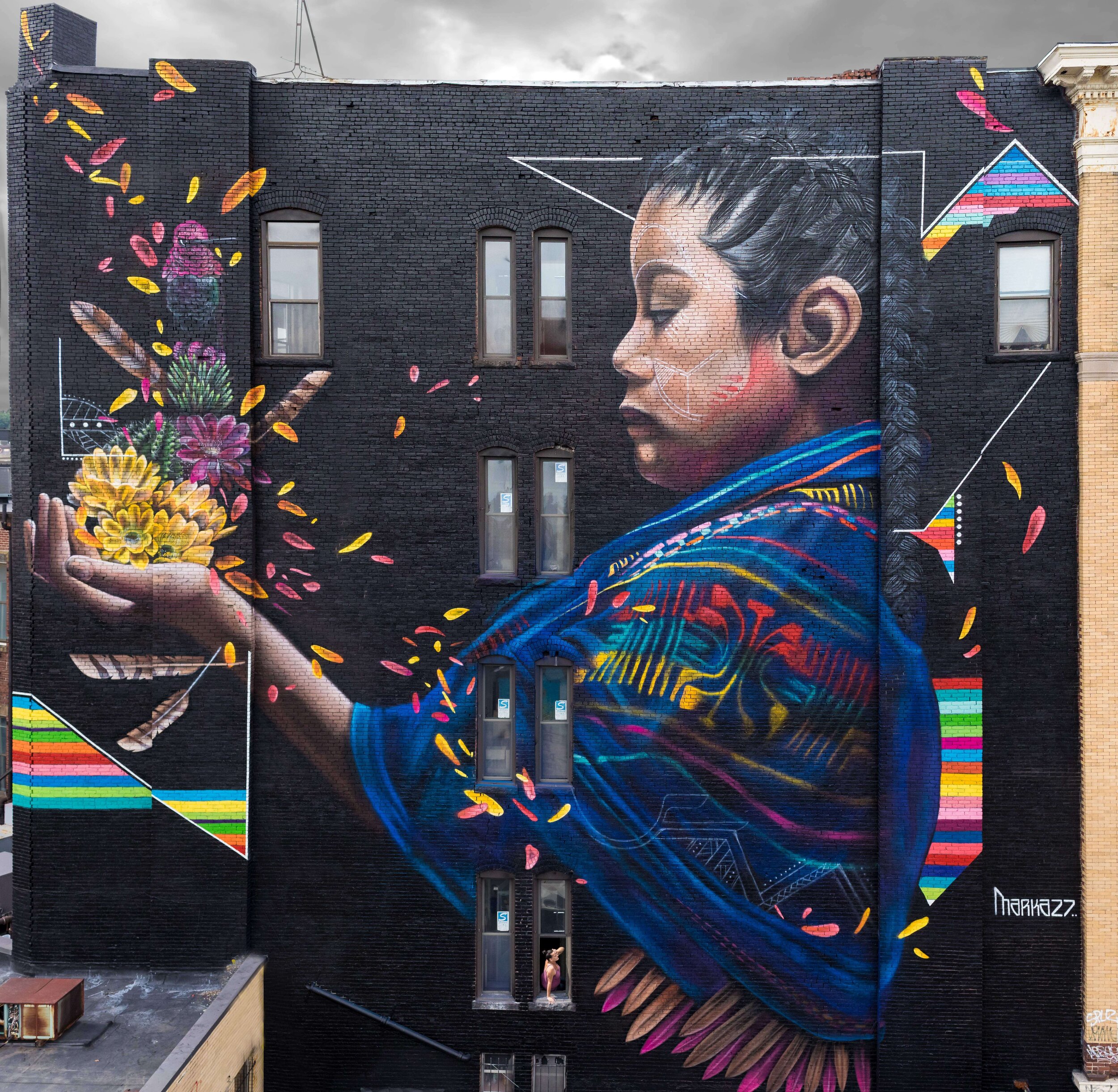
All images courtesy to the artist and Street Theory Gallery.
